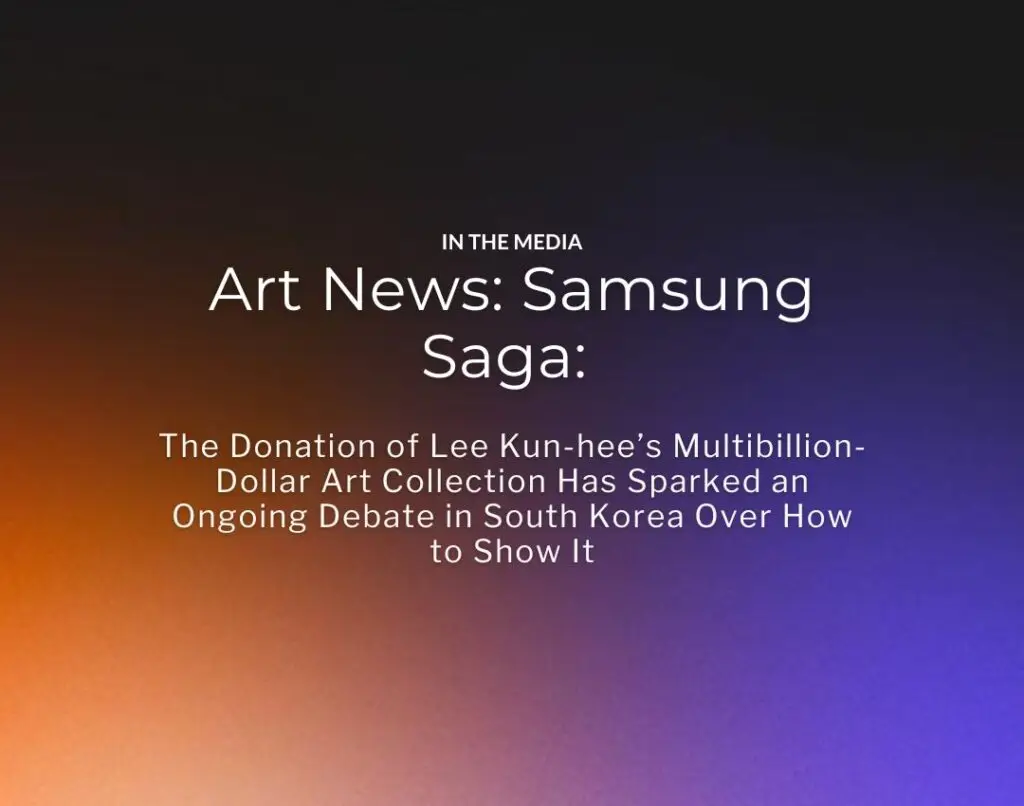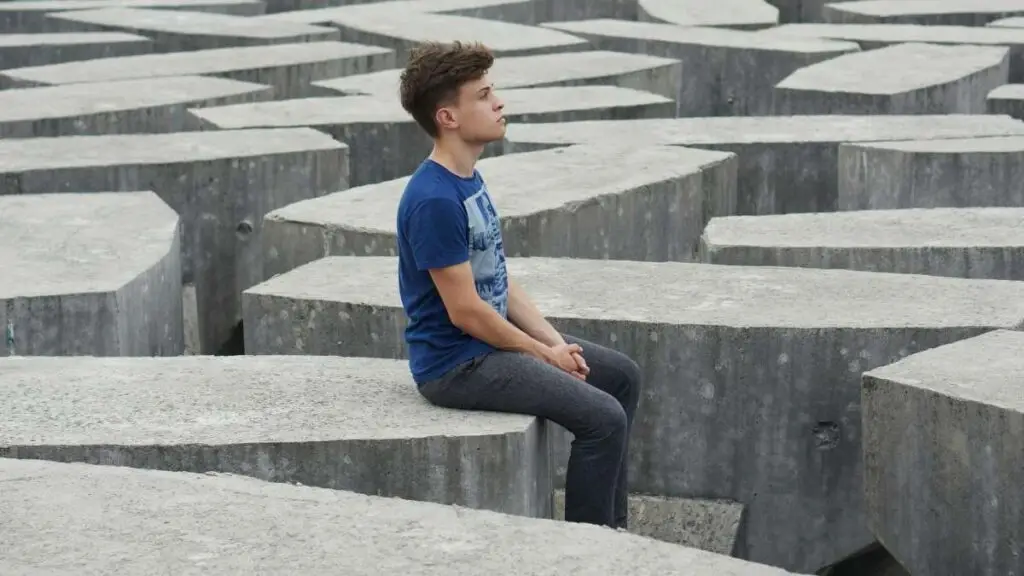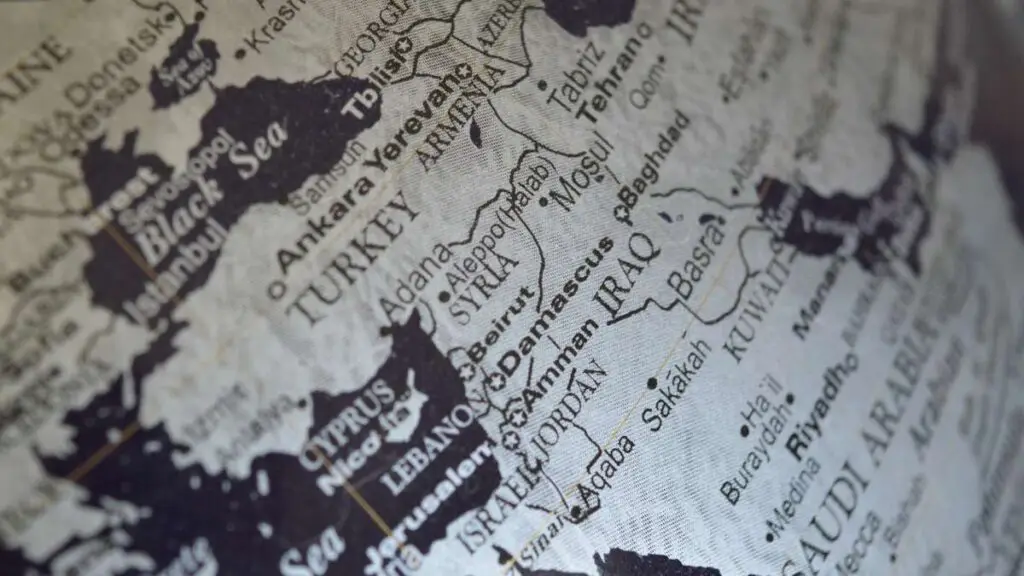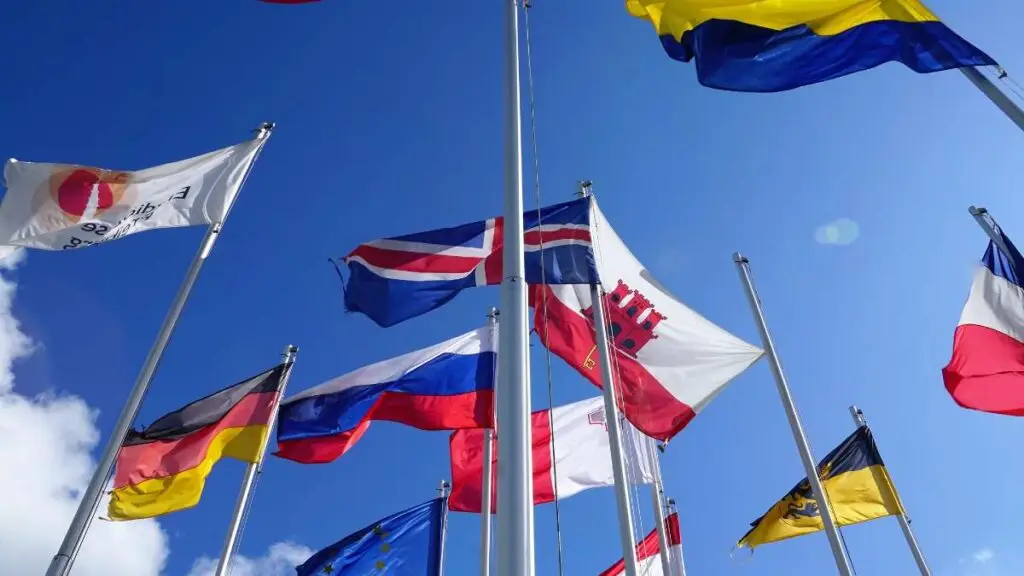By Andrew Russeth
September 28, 2022

For most of the past six hundred years, Korea’s leaders have resided in the same area of northern Seoul, first in Gyeongbokgung, a sprawling palace built in 1395 for the kings of the Joseon Dynasty (1392–1910). A meticulous reconstruction undertaken in recent decades now includes the National Palace Museum and the National Folk Museum. Looming behind it is a sizable traditional Korean-style building with dark teal roof tiles, part of Cheong Wa Dae, also known as the Blue House. Created by Japanese colonial rulers in the late 1930s, it was the official residence of South Korea’s presidents from 1948 until this past May, when the newly elected president, Yoon Suk-yeol, opted to set up operations elsewhere.
Related Articles
Beloved LA Art Space Rebrands as the Brick Ahead of Reopening Next Month
Sable Elyse Smith Wins $200,000 Suzanne Deal Booth / FLAG Art Foundation Prize
If all goes according to plan, these halls of tremendous power will soon be joined by one more: a museum for more than 20,000 artworks and antiquities from the collection of the late Samsung chairman Lee Kun-hee, once the richest person in the nation—and one of its most controversial, convicted twice on tax- and corruption-related charges and pardoned twice by past presidents.
Following Lee’s death in October 2020, at 78, after more than six years in a coma, his heirs donated 23,000 pieces from his immense art and antiquities holdings to seven South Korean museums. They were facing the highest estate-tax bill in the country’s history, and they thereby avoided taxes on the gifted works. Exhibitions of the trove in Seoul and elsewhere in the country drew vast crowds, and provided a rare glimpse into the activities of the notoriously secretive, scandal-plagued family. Debate has ensued about how and where to present Lee’s collection permanently—and about perceived shortcomings in South Korea’s approach to art.
One hot summer afternoon, an official from the Ministry of Culture, Sports, and Tourism involved in bringing this high-stakes museum to fruition, Lee Dangkweon, sat in a corner office of the 10th-floor Foreign Press Center, with Gyeongbokgung visible behind him, to discuss the plans for a Lee Kun-hee Collection museum on a lot just east of Gyeongbokgung. The donation has “shined a bright light on culture,” Lee, the Ministry’s director of cultural infrastructure, said via an interpreter. An architectural competition was being prepared, with the aim to open in December 2027. He acknowledged the competing views for the museum, but said of the ministry’s approach, “the ultimate goal is for more people to enjoy the collection.”

Since its founding in 1938 in the city of Daegu, the Samsung Group has always been a family affair. Lee Byung-chul (aka B.C. Lee) established the company as a trading concern for dried fish and other staples, and in the following decades grew it into a multifarious behemoth. It entered the electronics game in the late ’60s. Its best-known entity, Samsung Electronics, hauled in more than $200 billion last year, but it is only the largest piece in a vertigo-inducing web of companies involved in everything from shipbuilding to hotels, credit cards to life insurance. The largest chaebol (family-run conglomerate) in South Korea, its annual revenue is by some estimates equal to 20 percent or more of the country’s gross domestic product.
After Lee Byung-chul’s death in 1987, his son Lee Kun-hee became chairman and, in dramatic fashion, continued to expand Samsung—and the seeds of an art collection his father left behind.
Samsung’s art holdings in South Korea are not as byzantine as its corporate structure, but they are, in their own way, just as formidable. There are two impressive museums responsible for safeguarding artworks from throughout the ages, and run by the Samsung Foundation of Culture; then there is privately owned art, cloaked in darkness, purchased by Lee and his wife, Hong Ra-hee, and other family members.
“No one really knows the breadth and depth of the Samsung family collection,” one Korean art dealer told me. (The Lee family is notoriously private and does not speak with journalists. One art insider likened trying to talk with them to requesting an interview with a monarch.)

For Lee Kun-hee, art was intimately intertwined with his soaring ambitions for his company. In 1993, he famously summoned 200 Samsung executives to a luxury hotel in Frankfurt, Germany, and berated them for three days about the need to improve the quality of the firm’s janky electronics, stating that “faulty products are the root of all evil,” as Geoffrey Cain recounts in his 2020 book, Samsung Rising. In the preceding years, Lee had made the pursuit of quality the cornerstone of his collecting, tasking a scholar on payroll, Lee Chong-sun, to acquire 100 traditional Korean artworks classified as National Treasures, the highest government designation. In his 2016 (Samsung-approved) book on these efforts, Lee Chong-sun links the chairman’s management and collecting philosophies, describing his willingness to spend enormous sums for the best, writing that the refrain in the Korean art market became, “All good things go to Samsung.”
B.C. Lee, by contrast, was a more modest buyer, who saw his collecting as a means of preserving traditional Korean culture, which had been under threat during the Japanese colonial period, when many examples were shipped abroad. Lee Kun-hee continued to collect older material while moving into modern and contemporary art with Hong, who is seen as a discerning collector, and a tastemaker in elite circles. During a recent showing of highlights from the Lee donation at the National Museum of Korea (NMK), one pairing showed this juxtaposition of the ancient and modern in full force: stone statues of children—cemetery guardians in the Joseon era—stood beneath a wall opening that looked into a room with a Monet “Water Lily” painting, the first Monet to enter a Korean museum collection.

Lee Kun-hee was relentless as both an art buyer and executive, and even a meeting with an artist could occasion an opportunity for him to score a victory for Samsung. In the late ’80s, he convinced Korean American artist Nam June Paik to use his TVs instead of those of archrival Sony, the Korea Times has reported. But that apparently didn’t stop Paik from using Sonys in Brahms, a 1993 assemblage with three screens (the Sony logo now obscured), two cellos, and a keyboard that was part of the NMK show.
In 1982, as Lee fils was taking on greater responsibility at Samsung, B.C. Lee built the Ho-Am (his pen name), a private museum to display some of his acquisitions, in Yongin, about 40 minutes south of Seoul. The stately two-story traditional structure, surrounded by a gracious garden, now has at its edge a menacing Louise Bourgeois spider sculpture. (The Ho-Am is next to Samsung’s amusement park, Everland, which made headlines in 2008 when police raided its warehouses, hunting for art. Hong was questioned about allegedly using an illegal Samsung slush fund to acquire art, including early pieces by Roy Lichtenstein and Frank Stella. She was not charged.)

In 2004, Lee and Hong opened a museum of their own, the Leeum Museum of Art, on a hill not far from their home in the wealthy Seoul enclave of Hannam, for everything from ancient to contemporary art. It is a grand production, its three buildings conceived by three different starchitects: Rem Koolhaas, Jean Nouvel, and Mario Botta. (Samsung, after all, translates to “three stars” in Korean hanja.)
“It is the one and only museum that I would introduce people to who are visiting Korea,” another dealer told me. “It is so tasteful.” Under the direction of Hong, the Leeum became a venue for venturesome shows by leading artists like Do Ho Suh and Matthew Barney, with a collection stocked with prime examples by giants like Alberto Giacometti, Kim Whanki, Lee Bul, and Mark Rothko.
And then, in 2017, it all came to a halt.
Lee Kun-hee was in a coma, and his and Hong’s only son, Lee Jae-yong, better known as Jay Y. Lee, was serving as Samsung’s de facto leader when, in February, he was charged with bribery related to his succession. In short order, Hong quit her post as Leeum museum director, and her sister, deputy director, followed her out. All special exhibitions were canceled. Jay Y. Lee was convicted and began serving prison time, then had his sentence suspended on appeal. When the pandemic arrived in early 2020, the Leeum closed its doors, but unlike most other Korean museums, it did not reopen. In January 2021, a court sent Lee back to prison. Rumors abounded about when the museum might return, the timing perhaps tied to his release.

When Lee Kun-hee died in 2020, the family faced the prospect of colossal inheritance taxes, thanks to South Korea’s 50 percent estate-tax rate, which can rise to 60 percent in some cases. They had six months to calculate it and begin paying. There was speculation that the collection might be auctioned to defray the taxes; politicians called for legislation to allow the art to be used to cover taxes, as in other countries.
That April, the family announced that it would pay around $11 billion, one of the highest tax bills probably ever totaled anywhere. They also said they would give about $900 million to health care causes, and they detailed the art donation. More than 20,000 antiquities (a majority of which are books) went to the NMK. Preparing complete catalogues on the works is expected to take five years. Almost 1,500 pieces (primarily superb examples of Korean modernism along with that Monet, plus a smattering of Western works by Picasso, Chagall, and a few others) went to the National Museum of Modern and Contemporary Art (MMCA). About 100 pieces went to five institutions beyond Seoul: the Daegu Art Museum, the Gwangju Museum of Art, the Park Soo Keun Museum in Yanggu, the Jeonnam Museum of Art in Gwangyang, and the Lee Jung Seop Art Museum on Jeju island.
The lucky recipients were quick to open shows, and the MMCA’s included an 18-foot Kim Whanki painting from the 1950s depicting women at work in a pastel-hued abstract environment. Over the course of 11 months, including two extensions, it brought in a quarter million people (even more impressive, given pandemic restrictions). During the closing weekend this past June, the average wait to get in was four hours, according to the museum.

The show “played a pivotal role in promoting a culture of charity and public interest in the art market,” MMCA director Youn Bummo told me via email, saying that the Lee gift had also inspired others to make donations to the institution.
But Youn declined to comment about what happened early in his exhibition’s run: The Ministry of Culture announced that the Lee gifts to the MMCA and NMK would be redirected to a dedicated museum focused on the Lee Kun-hee Collection, its location to be determined by an expert panel.
The battle lines were drawn. Before long, more than 20 mayors, governors, and other officials were lobbying for the proposed museum to be sited in their districts, citing their region’s ties (however tenuous) to the two deceased Samsung chairmen and the company itself. Even the typically strait-laced Korean wire service Yonhap was moved to write that their reasons were “as varied as they are ingenious.”
Simultaneously, a lobbying effort began from some in the Korean art world for the creation of a national museum for modern art, holding Lee gifts in that area, with the MMCA then focusing on contemporary. An advocate of that plan, Chung Joon-mo, a former MMCA chief curator, has argued that placing the donated works in a museum devoted to the Lee gift—rather than museums for specific types of art—would make South Korea a “laughing stock” in the global art world.
In any case, after months of campaigning, the national government came to a decision on the location of a dedicated Lee museum. It settled on … Seoul.

The designated spot is near not only the Blue House and Gyeongbokgung but also two other major palaces, the MMCA’s main Seoul branch, and high-power galleries Kukje, Hyundai, PKM. “We are going to create a cultural belt,” Lee Dangkweon, the ministry director, said.
But even some dealers with Seoul galleries question the idea. “So many good things are crowded in this area,” one told me, proposing that there is “a serious unbalance in terms of cultural infrastructure for this country.” (Almost 40 percent of the country’s art museums are in the Seoul region.) This dealer lamented that the Lee museum “was an optimal opportunity” for another city to get “a wonderful museum, creating a new vibrant environment.”
Lee Dangkweon said the ministry’s position has been that a dedicated space for the collection will be most “meaningful and interesting to the public,” and Seoul has the unique resources to accommodate research, and can provide easy access. An emphasis of the new Yoon administration is “striking a balance between Seoul and other cities in the future,” he said. The collection is touring widely throughout the country, hitting more than a dozen museums by 2024. Its Western art is now on view at MMCA’s Gwacheon branch, south of Seoul.
The Lee Kun-hee Collection could soon help fuel South Korea’s soft power efforts, which it has mastered in music, food, and film. The NMK is in talks to tour works to the Art Institute of Chicago and the Metropolitan Museum of Art in New York, Lee said. In Seoul, one can see a Samsung chairman’s treasures being a potent draw for foreign tourists.
For some in South Korea, however, the planned Lee museum calls attention to an uncomfortably close relationship between the government and some of its richest citizens. Sangin Park, a vocal Samsung critic and economist at Seoul National University, said in an interview that building a museum for the collection is a kind of “embellishment for the Lee family,” adding, “it is another indicator of how powerful and significant the Samsung family is in Korean society.”
The resulting fracas has also underscored the challenges faced by existing Korean museums. The Lee Kun-hee donation may not have been the collection’s “cream of the crop,” but “it certainly surpasses anything that the MMCA has,” the dealer who discussed the opacity of the family’s holdings told me. (The museum previously had no substantial Western art.) With a yearly acquisitions budget of under $4 million, the MMCA cannot imagine competing at the top end of the market, and South Korea does not offer tax incentives for art donations like those in the United States and elsewhere. “The country needs a reasonable and transparent policy or system to draw good artworks into the public museum,” the dealer critical of the planned museum’s Seoul location said. Prominent figures in Korea’s art scene have called for those tax changes.

Meanwhile, the Leeum has roared back to life.
Last fall, a couple months after Jay Y. Lee was paroled (he had served more than half his sentence), it reopened with a handsome renovation and a group show that included blue-chip artists from its collection, like Yves Klein and Cindy Sherman, with emerging local figures like Haneyl Choi. Members of Blackpink and BTS dropped by, and their fans followed. (In August, President Yoon pardoned Jay Y. Lee, though he still faces trial on other allegations.)
Like the business, the museum remains in the family. While Jay is said to be interested in traditional art, his sister Lee Seo-hyun is passionate about contemporary. A trustee of the Dia Art Foundation in New York, she now chairs the Leeum’s steering committee, and about two years ago brought aboard Kim Sung-won, a dynamic professor of art history from the Seoul National University of Science and Technology, as deputy director. (The director chair previously occupied by Hong remains empty.)
Asked about the enthusiastic response that Leeum’s reopening has received, Kim proposed that the Lee Kun-hee Collection exhibitions had played a part. They showed “how a passion for art contributes to cultural values and a collective legacy,” she said in an email. “In this sense, the exhibition of Lee’s collection helped reach out to the audience, and in turn, drew them closer to the museum.” A major Ian Cheng exhibition and a sharp showcase of young Korean artists ran earlier this year. Dealers here say that the Leeum is actively buying. Many good things continue to go to Samsung.
A version of this article appears in the 2022 edition of ARTnews’s Top 200 Collectors issue, under the title “Samsung Saga.”
See Also:





